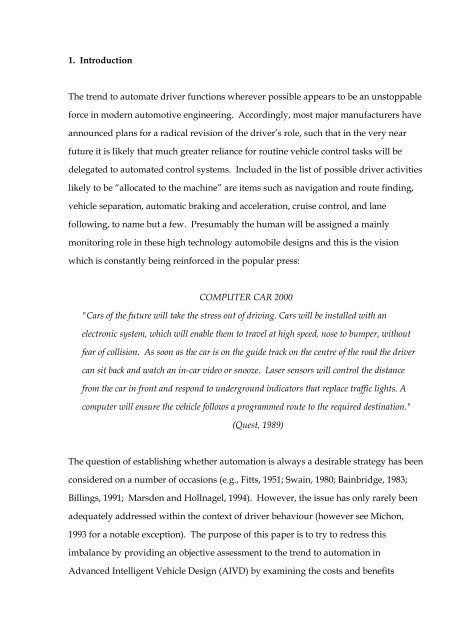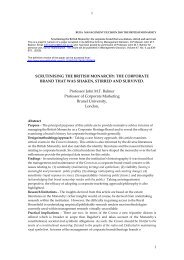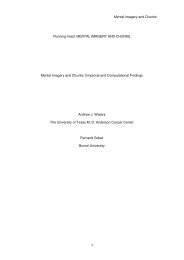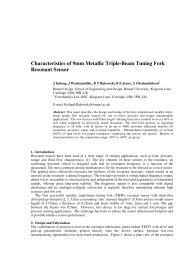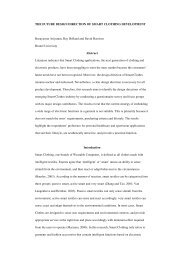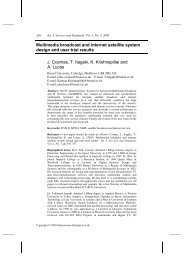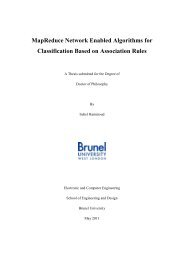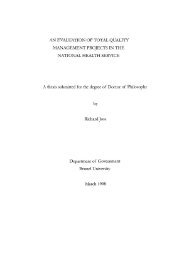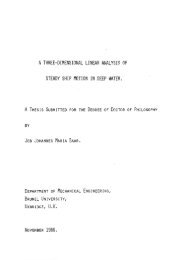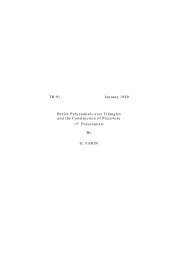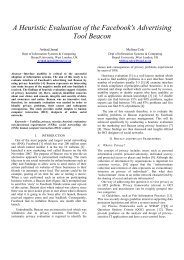From Fly-by-Wire to Drive-by-Wire: Safety implications of automation ...
From Fly-by-Wire to Drive-by-Wire: Safety implications of automation ...
From Fly-by-Wire to Drive-by-Wire: Safety implications of automation ...
You also want an ePaper? Increase the reach of your titles
YUMPU automatically turns print PDFs into web optimized ePapers that Google loves.
1. Introduction<br />
The trend <strong>to</strong> au<strong>to</strong>mate driver functions wherever possible appears <strong>to</strong> be an uns<strong>to</strong>ppable<br />
force in modern au<strong>to</strong>motive engineering. Accordingly, most major manufacturers have<br />
announced plans for a radical revision <strong>of</strong> the driver’s role, such that in the very near<br />
future it is likely that much greater reliance for routine vehicle control tasks will be<br />
delegated <strong>to</strong> au<strong>to</strong>mated control systems. Included in the list <strong>of</strong> possible driver activities<br />
likely <strong>to</strong> be “allocated <strong>to</strong> the machine” are items such as navigation and route finding,<br />
vehicle separation, au<strong>to</strong>matic braking and acceleration, cruise control, and lane<br />
following, <strong>to</strong> name but a few. Presumably the human will be assigned a mainly<br />
moni<strong>to</strong>ring role in these high technology au<strong>to</strong>mobile designs and this is the vision<br />
which is constantly being reinforced in the popular press:<br />
COMPUTER CAR 2000<br />
"Cars <strong>of</strong> the future will take the stress out <strong>of</strong> driving. Cars will be installed with an<br />
electronic system, which will enable them <strong>to</strong> travel at high speed, nose <strong>to</strong> bumper, without<br />
fear <strong>of</strong> collision. As soon as the car is on the guide track on the centre <strong>of</strong> the road the driver<br />
can sit back and watch an in-car video or snooze. Laser sensors will control the distance<br />
from the car in front and respond <strong>to</strong> underground indica<strong>to</strong>rs that replace traffic lights. A<br />
computer will ensure the vehicle follows a programmed route <strong>to</strong> the required destination."<br />
(Quest, 1989)<br />
The question <strong>of</strong> establishing whether au<strong>to</strong>mation is always a desirable strategy has been<br />
considered on a number <strong>of</strong> occasions (e.g., Fitts, 1951; Swain, 1980; Bainbridge, 1983;<br />
Billings, 1991; Marsden and Hollnagel, 1994). However, the issue has only rarely been<br />
adequately addressed within the context <strong>of</strong> driver behaviour (however see Michon,<br />
1993 for a notable exception). The purpose <strong>of</strong> this paper is <strong>to</strong> try <strong>to</strong> redress this<br />
imbalance <strong>by</strong> providing an objective assessment <strong>to</strong> the trend <strong>to</strong> au<strong>to</strong>mation in<br />
Advanced Intelligent Vehicle Design (AIVD) <strong>by</strong> examining the costs and benefits


